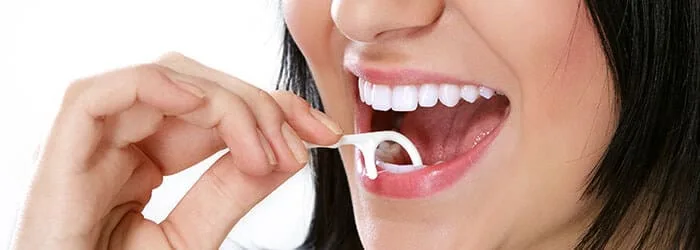What is Oral Thrush?
Oral thrush, also known as oral candidiasis, is a condition that occurs when a fungus called Candida albicans builds up on the lining of your mouth. Anyone can develop oral thrush, but babies, young children, older adults, or anyone with a compromised immune system due to an illness such as HIV are more susceptible.
Oral Thrush Symptoms
Conversely, candidiasis lesions can be an early sign of an HIV infection. The main symptom of oral thrush is creamy white lesions in the mouth, usually on the tongue or inner cheeks. A thrush infection can spread and involve the roof of the mouth and the gums, where it can cause symptoms such as redness and irritation. In some cases, the lesions may appear on the roof of the mouth or on the back of the throat. Oral thrush can sometimes also be confused with leukoplakia. But leukoplakia lesions are caused by chronic irritation from rough edges on teeth, fillings or crowns, not by an organism. And leukoplakia lesions develop over time, while thrush lesions may develop suddenly.
Oral Thrush Causes
Thrush is caused when the naturally occurring fungi in the body get out of balance, which is why the very old, very young, and people with weak immune systems are at higher risk. Good oral hygiene, however, is an essential part of treating oral thrush. Healthy adults and children can recover fairly easily from the infection, especially if they follow a complete oral care routine of twice-daily tooth brushing and daily proper flossing. See your dental professional if you have any type of lesions on your tongue or in your mouth so you can determine the cause of the problem and plan a course of treatment. The goal in treating thrush is to stop the infection from spreading.
Oral Thrush Treatment
If you have thrush, here are a few things to keep in mind:
To prevent thrush from occurring or recurring, follow a consistent oral health care routine, and try to include yogurt with live, active cultures in your diet, especially if you take antibiotics for a chronic condition.
Change your toothbrush more often. Replace your toothbrush more frequently than the standard recommendation of every three months. Once the thrush infection clears, you can use your toothbrush for as long as three months or until it appears worn.
Choose any floss. As long as you follow proper flossing technique, any type of floss or dental tape can be used as part of your oral care routine if you have thrush. An electric flosser is fine, too.
Thrush is common in infants and toddlers because their immune systems are not fully developed. If you notice white lesions in the mouth of your infant or toddler, see your doctor or dental professional, but healthy toddlers may need no real treatment other than proper oral hygiene. Also, healthy children and adults can add unsweetened yogurt with acidophilus to some meals and snacks.
Acidophilus are healthy bacteria that can help treat the thrush infection by helping to restore a healthy balance of bacteria in your body. Your doctor or dental professional also may prescribe a short-term antifungal medication to help fight the infection. For breastfeeding mothers, your doctor may recommend an antifungal cream to apply to your nipples to help resolve the infection in your infant.
Oral Thrush in Babies and New Borns
Breastfeeding mothers should be alert to signs of thrush during a healthy newborn’s first two weeks—that is when the infection is quite common. An infant with thrush may be especially fussy and resistant to feeding, and parents should be sure to check a newborn’s mouth for signs of lesions. In addition, a baby with thrush can transmit the infection back to the mother.
New mothers should be alert to these signs:
Pain in the breast or nipples during nursing.
Stabbing pain deep in the breast at non-nursing times.
Especially red or sensitive nipples.
Flaky skin surrounding the nipples.
Healthy babies and children may not need treatment however—the lesions may resolve on their own. Sometimes adding yogurt to you or your child’s diet may do the trick and reset the bacterial imbalance caused by the excess amount of the thrush fungus.
How is Oral Thrush Diagnosed?
Most doctors or dental professionals can diagnose thrush by looking at the lesions, but if you or your doctor or dental professional suspects that an underlying medical problem may be associated with thrush, it’s important to have a physical exam and blood tests to pin down the problem. Also, if you’re recovering from oral thrush, try to limit your intake of yeast breads, beer, and wine, because the yeast in these products may promote the growth of candida organisms.

Sign Up
for expert advice and exclusive offers









